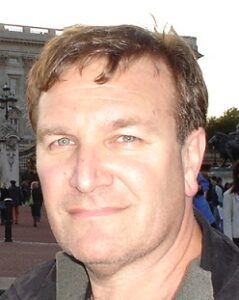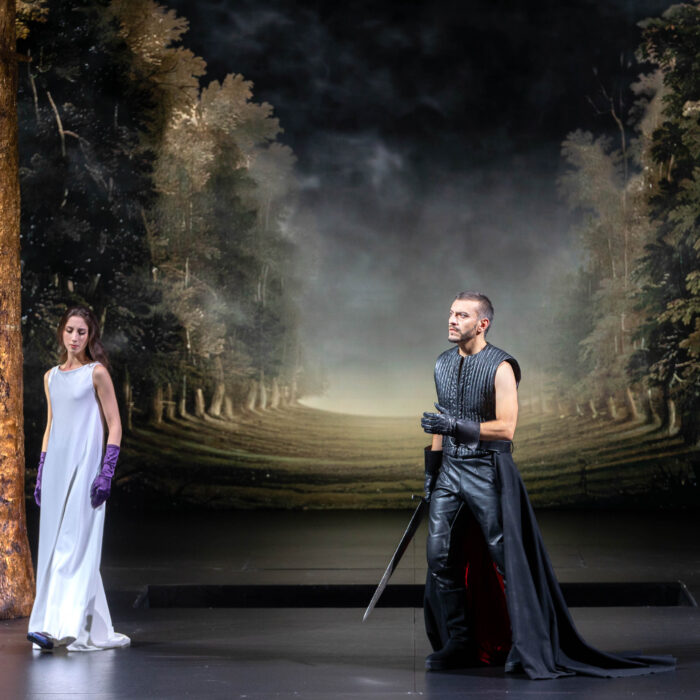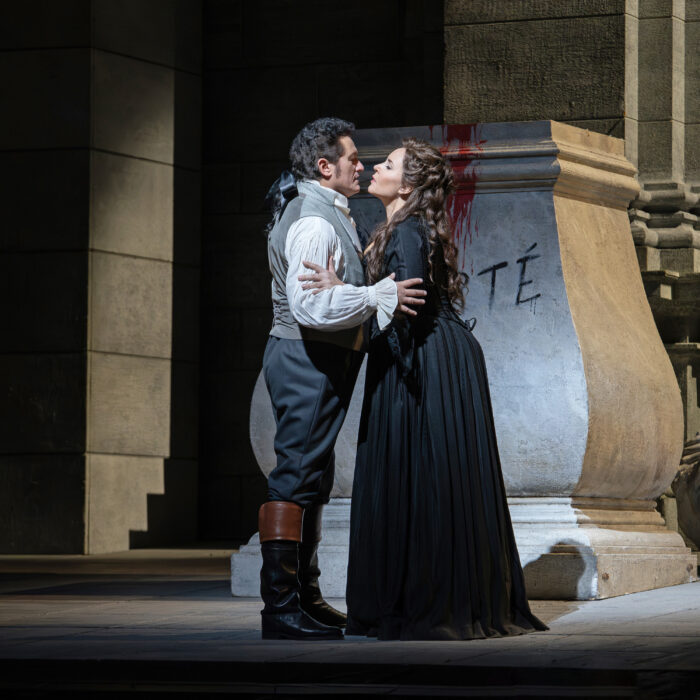
Opera Australia 2025 Review: Dido and Aeneas
By Gordon Williams(Photo credit: Keith Saunders)
The Opera Australia production of Purcell’s “Dido and Aeneas” that opened at the Sydney Opera House on March 13 was the second time in a year that Erin Helyard conducted the work. Previously, Helyard’s own company Pinchgut Opera had presented the work at Angel Place Recital Hall.
This time Helyard conducted a co-production between Opera Australia (and the Opera Australia Orchestra) and Circa, the Brisbane-based acrobatic troupe, who teamed up with Opera Queensland to present the production in 2024. Circa also teamed up with Opera Australia last year to stage Gluck’s “Orpheus and Eurydice.”
Back then I noted how director Yaron Lifschitz in his program essay wrote intriguingly of the Orpheus myth’s juxtaposition of death and desire and of how these two poles might be thought to have inspired the planes of expression interwoven throughout this presentation. I also acknowledged Gluck’s work’s origins in French opéra-ballet, which might perhaps countenance complementary planes of expression.
How did the collaboration work this time?
This time I wondered if there is a vocabulary of acrobatics that would have assisted in understanding how the two streams of expression–the music and the visuals– integrated. What was refreshing, back in 2024, teetered on mystifying this time. Perhaps the “Orpheus” production’s revelations were unrepeatable.
Purcell’s “Dido and Aeneas” is powerful in its dramatic simplicity.
The queen of Carthage, Dido (performed here by mezzo-soprano Anna Dowsley), falls in love with Aeneas (tenor Nicholas Jones), but a Sorceress (Dowsley as well) and her attendant witches (Angela Hogan and Keara Donohoe) who hate “all in prosp’rous state” plot to destroy that love. Prompted by the witches, a messenger disguised as an emissary of Jove (Cathy-Di Zhang described in the program as spirit “Mercury”) turns up to remind Aeneas that his destiny is to found Rome, and he leaves, breaking Dido’s heart sufficient to cause her to kill herself.
Pinchgut’s production last year made up for the loss of Purcell’s original prologue (seemingly an allegorical reference to reigning monarchs William and Mary which would possibly go over the heads of most contemporary Australian audiences anyway) by commissioning Australian poet Kate Mulvany to provide backstory to the Carthaginian queen in rhyming couplets. This time, a curtain raiser of acrobatics acted as induction to the tragedy. And before that, as the audience filed-in and settled in their seats, projections from a “Questionnaire” written by Sophie Calle and Grégoire Bouillier for the French magazine “Les Inrockuptibles” offered a clue to meaning in lines which spoke, for example, of words ending in fingers. There was a yearning quality to this text, some indication of a tragic love, but maybe tangential to the stark simplicity of librettist Nahum Tate’s original text.
Lifschitz saw Dido as a 1940s cabaret artist. Might cabaret have justified acrobatics on a realistic level? But a cabaret singer does not have the stature of a queen, so there is a major change in meaning. And Dowsley’s striking red wig concealed a staggering baldness. Baldness could have stood for a number of meanings–as mentioned, Dowsley doubled as the Sorceress–but was Dido doomed from the start (‘the fatal hour’ sung-of early on?) rather than sabotaged for her newfound, politically-questionable love?
Dowsley performed the title role in Pinchgut’s production of Cesti’s “Orontea” in 2023. Here, as Dido, her tragic predicament was firmly established, her final aria, “When I am Laid in Earth,” becoming the musical highlight it’s meant to be. And the production built musically to this moment. In fact, after a continuo exposition of the ground bass, the fuller string section in Helyard’s hands bestowed a poignant warmth on the proceedings. It was a lovely moment. Dowsley’s imploring “Remember Me” at the climax were effectively like keening. It’s also worth noting how Helyard brought out delicious subtleties in Purcell’s score, including a wonderful emphasis on dissonant phrase-ends in the Sorceress’s section.
Nicholas Jones was an effective foil as Aeneas, but I wish I could have concentrated on his and Dido’s duet when Aeneas offers to stay, though prompted to leave, and she commands him “Away, away.” There was so much else to keep an eye out for.
Dowsley’s doubling in the role of the Sorceress, who creates the mischief that leads to Dido’s death, posed an interesting question. Was Lifschitz suggesting that Dido’s destruction is some sort of an auto-suggestion? The interpolation of the cold aria from Purcell’s “King Arthur” (additional material was curated by Benjamin Bayl and Lifschitz) might’ve suggested some morbid predisposition on her part. Arguably we were in a more complicated, psychological realm than that portrayed by Tate’s powerful simplicity.
In many ways, this production looked great. Lighting designer Matthew Marshall’s stark spots and columns of light provided many arresting images. Perhaps that simplicity would have made a better keynote to the production.
Even the closing moments upended the simple choral reflection that is Purcell’s final elegiac number, “With drooping wings.” There was kind of a surround-sound sensation in the auditorium. The voices felt close, even intrusive, when maybe we could have been given space to grieve.
This production raised many questions.



